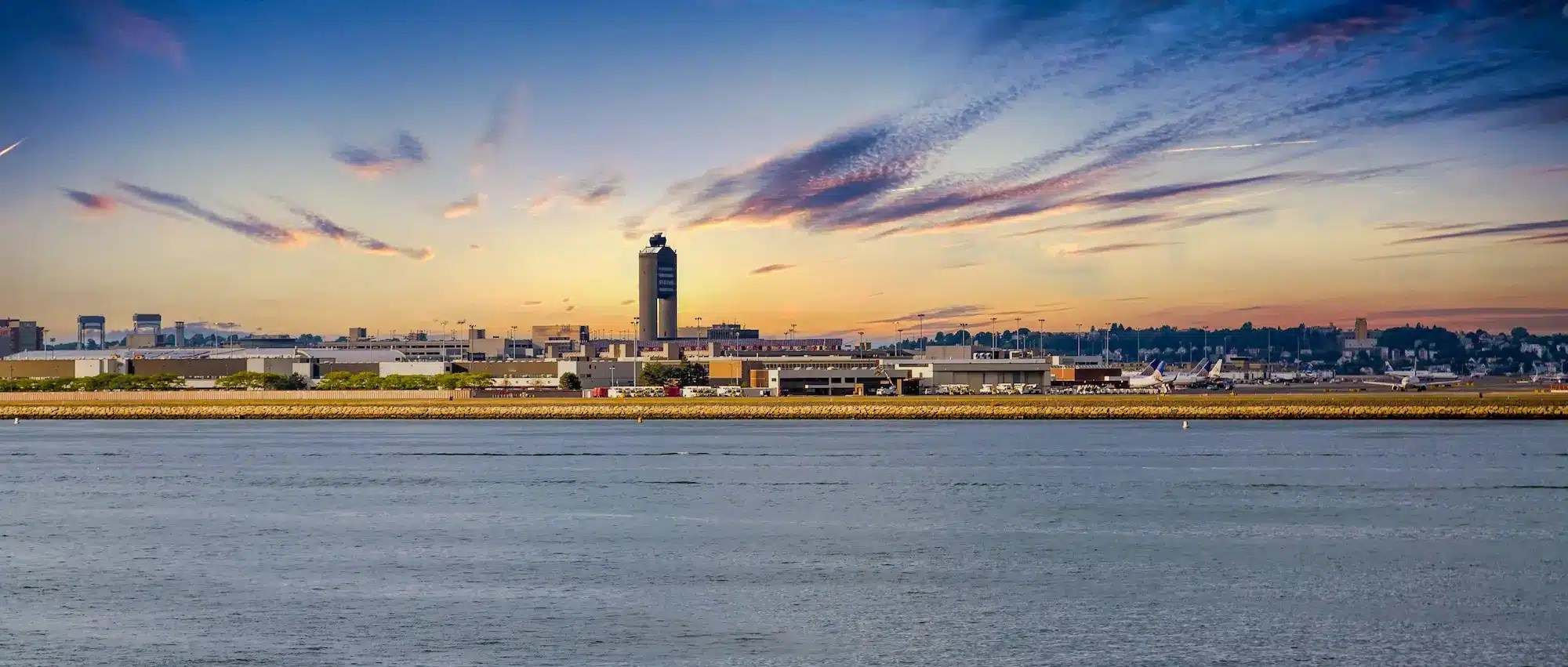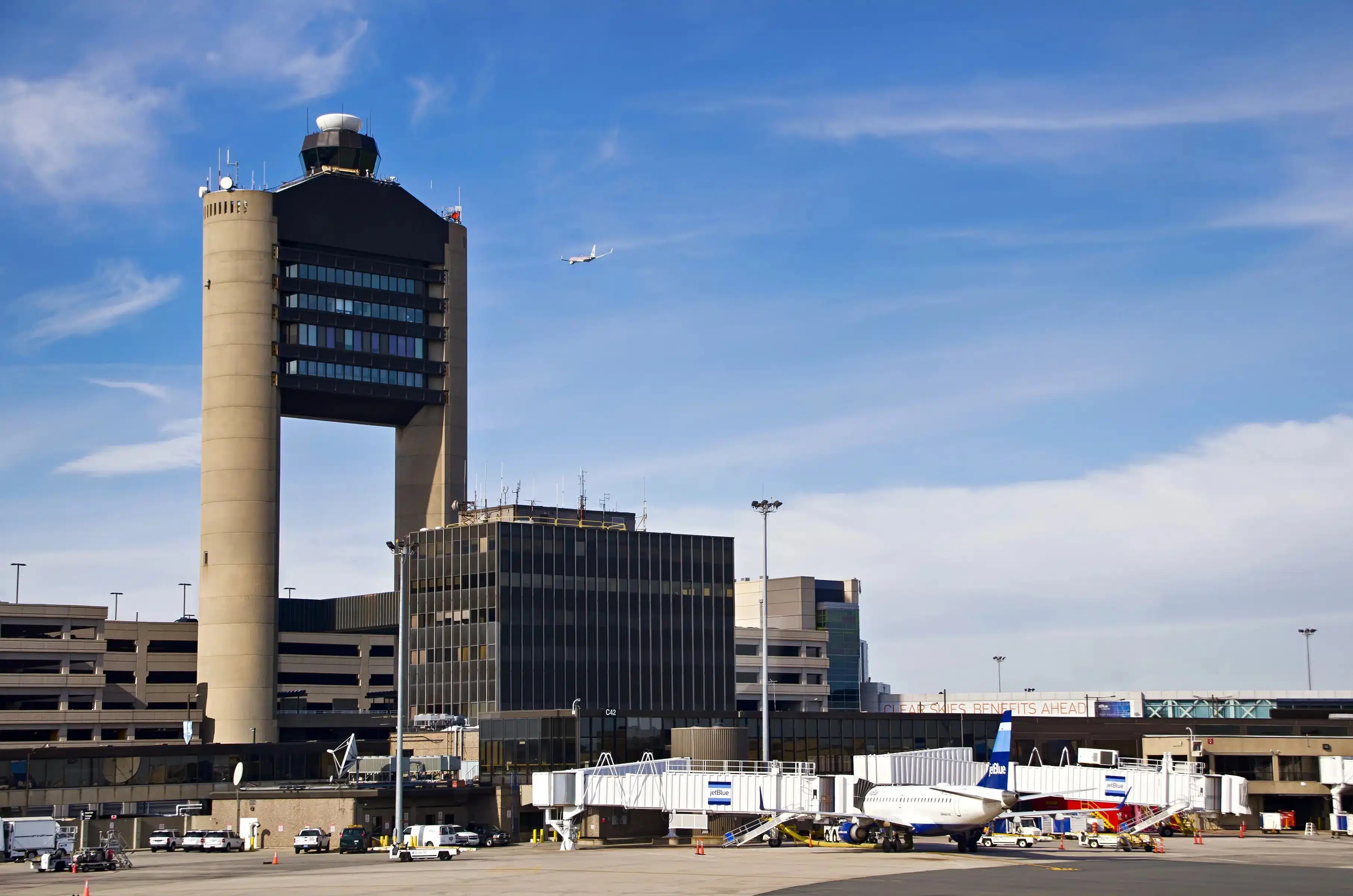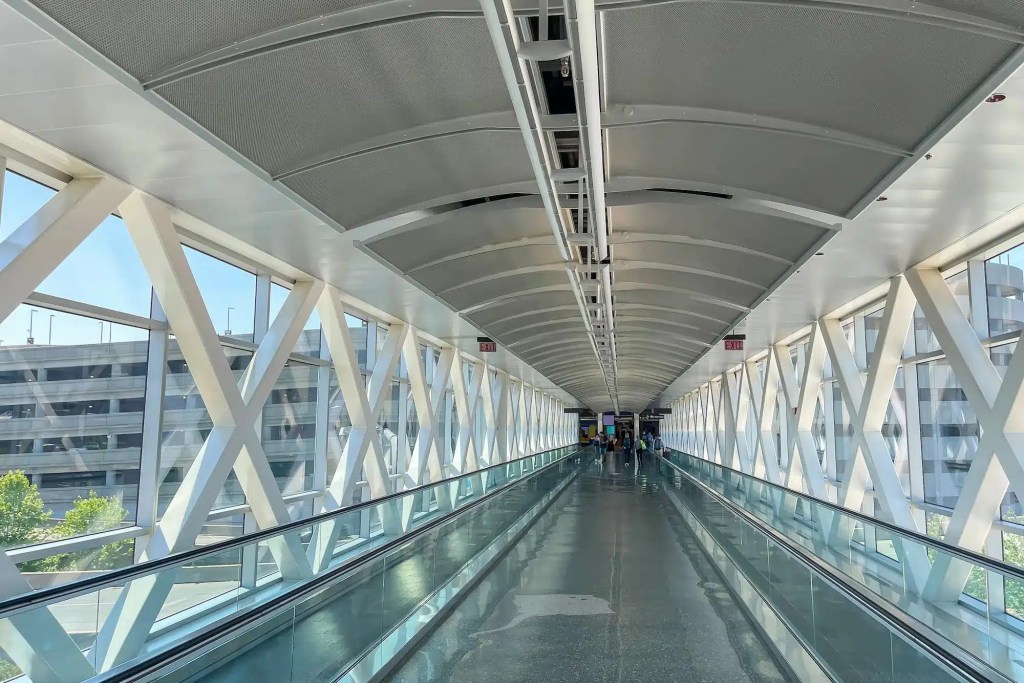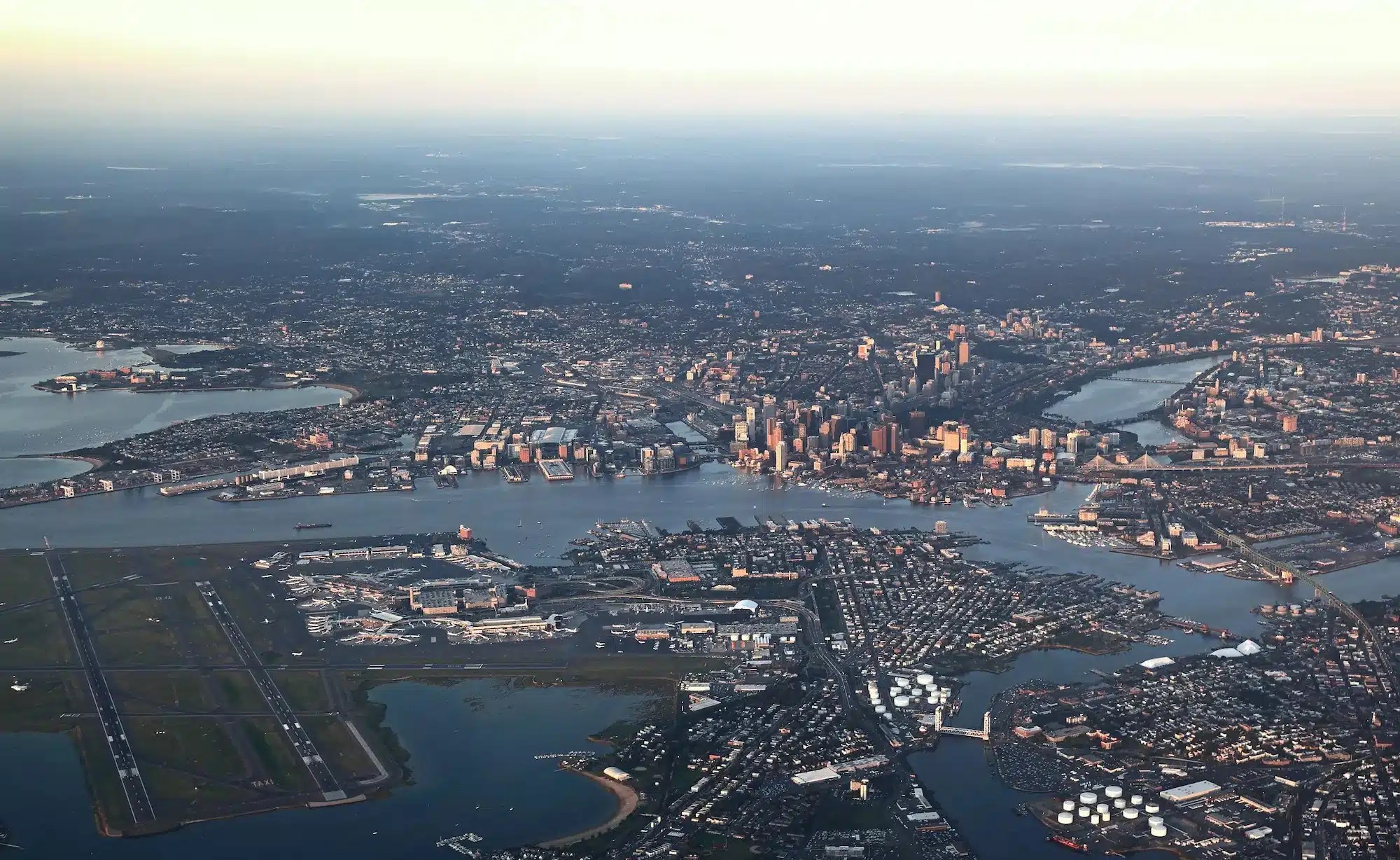Airports are more than just transportation hubs; they are gateways to new experiences, cultures, and destinations. In regard to global air travel, terminal design is rather important in keeping things fluid, safe, as well as shaping the passenger experience. Boston’s Terminal E stands out as an example of innovative architecture and thoughtful planning, revolutionizing the way travelers interact with the airport environment. But what are the unique architectural and planning features of Terminal E? How does GPR and similar technologies help create these unique examples of architectural mastery?

The Importance of Airport Design
Airports serve as the first and last impression for travelers, setting the tone for their journey. Effective airport design goes beyond functionality; it embodies the spirit of a city, facilitates seamless navigation, and enhances the overall passenger experience. Terminal E at Boston Logan International Airport exemplifies this philosophy, combining striking architecture with intuitive planning to create a world-class travel hub.
According to leading architects and experts in the field, creating a calm and functional, as well as aesthetically pleasing airport environment can make a huge difference when it comes to beating the competition. There is a startling amount of competition in the air travel industry. The United States has the highest airport connectivity score, with $239 billion USD air passenger revenue in 2021 alone. As technology changes the way we travel and the way we see the world around us, the air travel and airline industry are likely to hold strong. However, because the market is so expansive, it also means that there’s no shortage of flight companies or airports to choose from. Reducing the stress of travel and providing safe places to wait for boarding can more often than not be influencing factors when consumers and airlines choose to use your gates.
Airport design isn’t just important for traveler safety and satisfaction, but also for the flow and operation of air travel. Building one large, well designed airport is often the better solution, as it allows for civil aviation authorities to easily manage airlines and air travel. While smaller, budget friendly airlines may prefer a smaller airport, the increasing friendliness of airport alliances makes larger, well designed airports the better option. These operations are crucial not just for passenger travel, but also in terms of logistics, shipping, and otherwise. We rely on our airways a lot more than most would believe, and our need for efficient airlines is reflected in that need.
Airport design isn’t just important for travel, logistics, and shipping, but they also must be able to meet advances in technology. While technology like GPR can help the expansion of these airports, allowing them to safely build onto existing terminals. This happens often, for instance, when wingtip devices first appeared, another five feet were suddenly needed on both sides of the Airbus A320 and Boeing 737. To effectively meet those needs, an airport would have to meet the size requirements as well.
Like a domino of changes, one small design change could ripple into the need to redesign a terminal. From cobblestone to asphalt, changes in our environment are interconnected, and must be supported from the underground up.
SiteMap® (patent pending), powered by GPRS, is a new way to see your subsurface surroundings, mapping and annotating places you never knew existed. Platforms like SiteMap®, which are backed by amazing subsurface surveying companies and technology like GPRS, lay the groundwork for terminal design and change. To fly, you have to build from the ground up, starting with the underground.
A Brief History of Terminal E

Terminal E, also known as the International Terminal, opened its doors in 1974 to accommodate the growing demand for international air travel. Back in 1974, the terminal was known as the Volpe International Terminal. This terminal offered 12 gates to serve 10 international airlines and 1.5 million passengers annually. Despite the years of airline expansions, the number of gates has stayed the same. However, 34 airlines now use the terminal. In 2022, 6.45 million international passengers flew into Logan. Over the years, it has undergone several expansions and renovations to meet the evolving needs of passengers and airlines. Today, Terminal E stands as a modern marvel, blending state-of-the-art amenities with timeless design principles.
Massport announced the 320,000-square-foot expansion of Terminal E in 2018. This announcement also included a whopping budget of $700 million to $750 million. The project was initially designed to add seven new gates, gates that are desperately needed to meet the growing travel demands. The additional gates were slotted to bring the total to 19. Unfortunately, due to steep revenue loss during the COVID-19 pandemic, the budget was trimmed to a still-considerable $575 million. This budget cut meant dropping the number of new gates from seven to four. This cut would mean leaving Terminal E with a total of 16 gates, which is more than it had, but still not enough to meet its ever growing needs. Because many people drive to the airport, the parking lot is outdated, with very little room for parking, pickup or dropoff. A parking expansion was on the table, but it was lost in the cuts. When asked, a representative for Massport relayed that those lost three additional gates may eventually happen. However, there was no set timeline, despite the fact that they have been permitted.
The new terminal boasts many features and benefits, including the fact that it is also environmentally conscious. This means that the terminal’s energy efficiency is at least 20% better than required under the MA Energy Code and a design worthy of LEED Gold certification. Other notable eco-friendly features include photovoltaic window glazing, glare-controlling glass, an energy-efficient displacement ventilation system, including an upgraded HVAC system.
Massport boasts that the new terminal has drastically lower energy consumption, as well as reduced greenhouse gas emissions. The terminal also has improved water conservation, better air quality, and even additional waste management, which includes recycling. These energy benefits are often unseen in most airport terminals, though they are becoming more popular as airports renovate to meet new changes, needs, and wants.
Architectural Features

- Contemporary Design:
Terminal E boasts a sleek and contemporary design, characterized by clean lines, expansive glass facades, and soaring ceilings. The architecture reflects Boston’s reputation as a city of innovation and culture, creating a sense of arrival and departure that is both inspiring and welcoming.
- Natural Light:
One of the defining features of Terminal E is its abundant use of natural light. Floor-to-ceiling windows flood the terminal with sunlight, creating a bright and airy ambiance. Natural light not only enhances the aesthetic appeal of the terminal but also contributes to a sense of well-being among passengers.
- Sustainable Practices:
In alignment with Boston’s commitment to sustainability, Terminal E incorporates eco-friendly design elements and energy-efficient systems. The terminal sets a new standard for environmentally conscious airport design. These sustainable practices not only reduce the airport’s carbon footprint but also demonstrate a commitment to responsible stewardship of the environment.
Planning and Functionality
- Passenger Flow:
Efficient passenger flow is essential to the success of any airport terminal. Terminal E prioritizes seamless navigation, with clear wayfinding signage and intuitive layout design. The terminal’s spacious concourses and streamlined security checkpoints ensure smooth transitions for travelers, minimizing congestion and wait times. The international terminal at BOShas an additional 390,000 square feet of space for stores, lounges, and gates. This makes the flow feel less forced and claustrophobic.
- Retail and Dining:
Terminal E offers a diverse array of retail shops, restaurants, and amenities to cater to the needs of modern travelers.The concourse has several newly added dining options, including Sal’s Pizza, Boston Harbor Distillery, Legal Sea Foods, grab-and-go meals from Boston Market and Hudson, and of course, a more traditional food court. Additionally, Terminal E showcases local brands and flavors, offering passengers a taste of Boston’s vibrant culinary scene.
- Passenger Comfort:
Comfort is a priority in Terminal E, with ample seating areas, charging stations, and relaxation zones scattered throughout the terminal. These zones include a sensory room for customers overwhelmed by the crowded concourse. The sensory room features a replica airplane cabin that helps customers acclimate before takeoff. This unique feature demonstrates the Massachusetts Port Authority’s (Massport) commitment to inclusivity, safety, and progress. Whether travelers are waiting for their flight or catching up on work, the terminal provides a comfortable and accommodating environment to meet their needs.
Technological Integration
- Digital Innovation:
Terminal E embraces digital innovation to enhance the passenger experience. From self-check-in kiosks to real-time flight information displays, the terminal leverages technology to streamline processes and empower travelers with information. Additionally, Terminal E offers high-speed Wi-Fi connectivity, allowing passengers to stay connected while on the go. This digital innovation doesn’t end with customer satisfaction, but starts with safety. Terminal E boasts an expanded ticketing area with a modernized TSA security checkpoint. TSA can now use seven Analogic Computed Tomography (CT) lanes. These lanes are able to produce 3D images of luggage, the images can be rotated 360 degrees to allow for easy viewing. This advanced technology allows travelers to keep their important items like their laptops and other electronic devices in their bags during the TSA screening process. This saves time, but also allows passengers to retain a bit of dignity during a process that is often stressful and sometimes embarrassing.
- Smart Infrastructure:
The terminal’s infrastructure is equipped with smart technologies to improve operational efficiency and security. Advanced surveillance systems, automated baggage handling systems, and biometric authentication tools enhance safety and convenience for passengers and staff alike.
Underneath Terminal E

Terminal E has had a transformative impact on air travel in Boston and beyond. Its innovative design and thoughtful planning have earned acclaim from passengers and industry professionals alike, setting a new standard for airport terminals worldwide. By prioritizing passenger comfort, efficiency, and sustainability, Terminal E has redefined the airport experience, making travel more enjoyable and stress-free for millions of travelers each year.
However, these amazing upgrades wouldn’t have been possible without the technology and science that providers like GPRS use daily. But how do these technologies support the construction and expansion of airport terminals like Terminal E?
Understanding the Subsurface
To properly expand an existing terminal, or to build a new terminal, you have to know where to find the underground utility lines and infrastructure. Should you miss a utility line, in a worst-case scenario, it could mean the destruction of not only the terminal, but the entire airport, and beyond. There are over 20 million utility lines in the U.S., each of them just as important as the others, but some, like gas lines, are significantly more deadly. These lines help connect the country to the juice they need, whether it be power, gas, or telecommunications.
When the decision to expand a building is made, a complete map of the facility needs to be created, both below and above the ground. These existing conditions as-builts serve as a guide, allowing the construction team to properly construct and plan the structure(s) at hand. Without these maps and guides, catastrophe may ensue.
If they won’t let you buy a house without properly checking the foundation and inner workings, why would you build an entire airport terminal without doing the same? Subsurface utility locating and concrete scanning are absolutely necessary for the safety and success of terminal construction and design. These technologies help see the terminal and ensure the safety of the entire location, not just the parts that are already visible.
Technology Used
When expanding or creating a new airline terminal, it’s important that the subsurface get properly mapped out. This helps prevent accidents, keeps the budget on track, and also helps eliminate delays, or other negative consequences that are associated with utility line strikes. But what technology is used to help map out the underground area of an airport terminal? The technology that’s used to help build smart terminals for smart people, is the same technology that GPRS and SiteMap® use daily. This technology includes:
Ground Penetrating Radar
GPR is our bread and butter, it’s the meat to our potatoes, and it’s an exceptionally important technology. GPR, in concert with other complementary technologies, is used to identify buried objects and underground utilities. Our Project Managers provide 99.8% accurate field-verified utility maps, delivered via SiteMap®, and PDF & .KMZ files to all GPRS customers.
EM Locating – Active
Active EM locating involves actively transmitting a frequency through the underground utility’s conductive material. This is done by connecting through various points depending on the utility. The transmitter can be connected to various types of utility lines via a grounding wire or other physical utility structure above ground to provide the active signal that the EM locator can then read.
EM Locating – Passive
Electromagnetic (EM) locators are preferred by One Call contractors to locate public utility lines. GPRS utilizes them with GPR and other technologies as part of our Subsurface Investigation Methodology process to detect live AC power or radio signals along conductive utilities.
Robotic CCTV Crawlers
GPRS Project Managers use CCTV to investigate sanitary & storm sewers as part of our Video Pipe Inspection Services. Mainline crawlers and their small diameter cousins are used with push cameras and other technology to provide accurate, subsurface visualization and NASSCO-certified reporting.
3D Photogrammetry
GPRS’ in-house Mapping & Modeling Team can export the GPR concrete scans completed by our SIM-certified Project Managers to create accurate existing condition as-builts to give you the information you need in a format you can easily work with and share to keep your project on time, on budget, and safe
Every 60 seconds, there is a utility strike in the U.S,, with $61 billion being the overall cost of those utility strikes. But that’s not all, there’s an estimated $177.5 billion per year in construction costs associated with repairing areas affected by a utility strike. Utility strikes are preventable, and prevention is crucial, especially when managing the build of a new airport terminal. One small mistake can cause the loss of billions of dollars, as well as hundreds, even thousands of lives.
Terminal E at Boston Logan International Airport stands as a shining example of architectural innovation and strategic planning in the realm of air travel. This would not be possible without the work of companies like GPRS, who help map the terminal from the underground up. Innovative terminals like Terminal E in Boston would not be possible without technology used by companies like GPRS. These projects would fail, likely in grand disaster, without the proper mapping and discovery. SiteMap® makes interacting with your data simple, through the process of annotated and aggregated maps, viewable and interactable with anyone, anywhere, on any device.
At GPRS we believe that data control = damage control and we are committed to the pursuit of 100% subsurface damage prevention – on every job, in every market, nationwide.
To learn more about SiteMap® and how we can help map your next project, contact us today.
